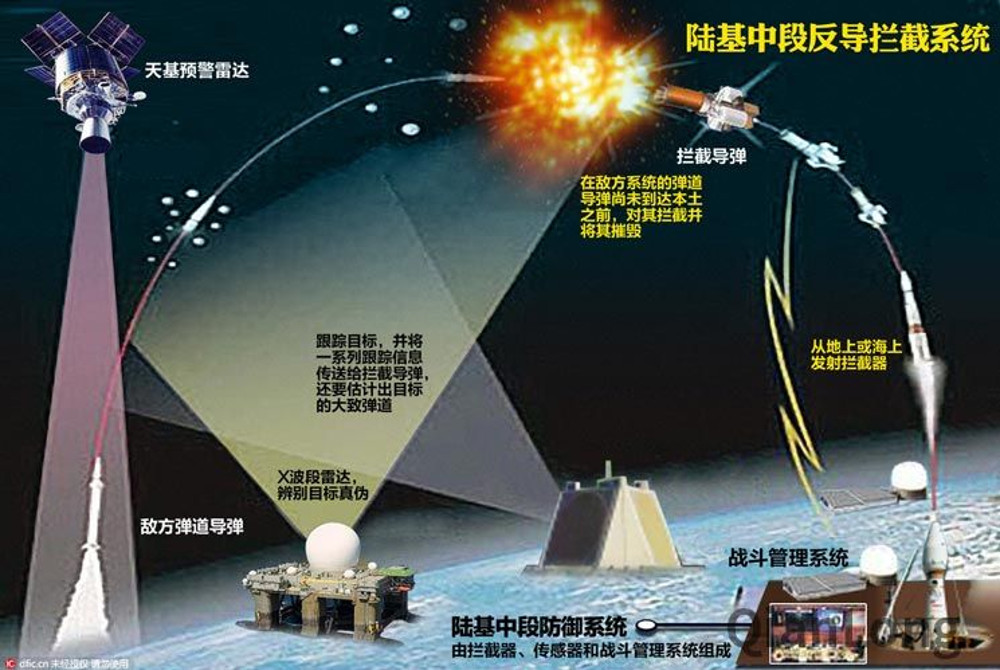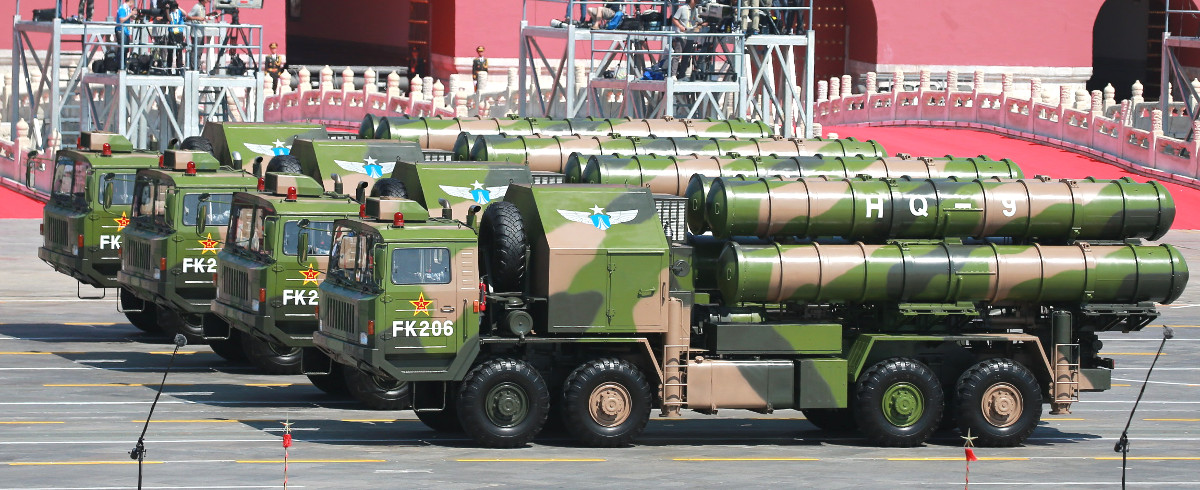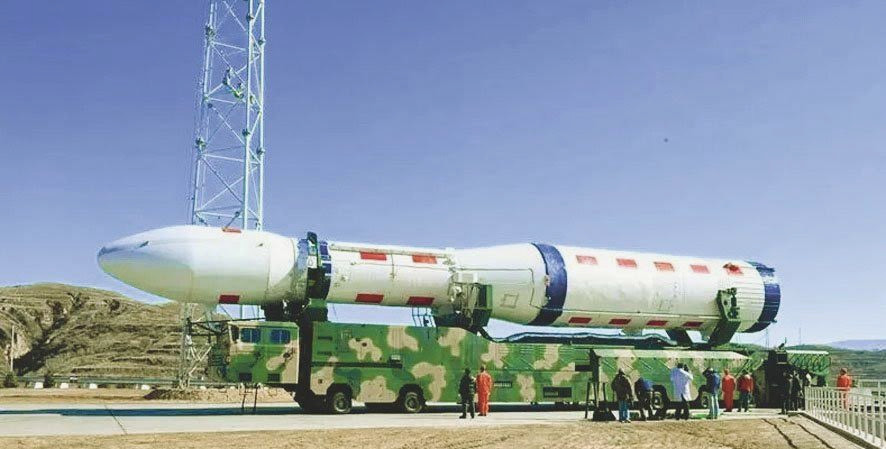Though there are few firm details, China says it has conducted a successful test of a ballistic missile defense interceptor. The launch could be part of ongoing work to shield the country from potential region threats, such as expanding Indian and South Korean ballistic missile forces, or even be a cover for continued anti-satellite weapon development.
The Chinese Ministry of National Defense made only a brief announcement about the event – around 50 Chinese characters and fewer than 250 words in its English translation – on Feb. 6, 2018. The People’s Liberation Army (PLA) fired the interceptor from the same site it had used for another test in 2014.
“China conducted a successful test of its ground-based midcourse defense system,” the official statement said, according to an English translation from People’s Daily, the official newspaper of the Chinese Communist Party. “The missile interception test was defensive in nature and is not targeted at any country.”
There was no mention of what particular interceptor system the PLA used in the experiment, whether it hit an actual test target, or any other specific objectives for the event. Separate reports have described it as a “hit-to-kill” weapon, meaning that it destroys its target by physically slamming into it, but so far there doesn’t appear to be an official confirmation.
People’s Daily did include an infographic describing the basics of midcourse ballistic missile defense, but using out of date imagery of the components of the United States’
Ground-based Midcourse Defense (GMD) interceptor and associated sensor nodes, including the Sea-based X-band Radar (SBX), one element of the land-based Solid State Phased Array Radar System (SSPARS), and a Defense Support Program (DSP) satellite. The U.S. military has been working to replace the DSP system with the Space Based Infrared System (SBIRS) and upgrade various components of the SSPARS.
To have the best chance of detecting an incoming threat and discriminating between real missiles and decoys after they’ve “gone cold” in outer space, a robust midcourse ballistic missile defense system, American or Chinese, requires these different sensors and systems to fuse that data together. That information would then also help cue the interceptor to the target, improving the chance of a kill. You can read more about how such a system would work in practice here.

China has long been interested in ballistic missile defense and has been actively working on these systems since the 2000s in response to parallel developments in the United States. But the primary publicly known interceptor is the HQ-19, a derivative of the HQ-9, which is itself a Chinese development of Russia’s S-300 series.
That system, also known to the United States as the CSA-X-19, is reportedly best suited to engaging medium range ballistic missiles (MRBM), which have a range of between approximately 620 and 1,865 miles, according to a 2017 Pentagon report to Congress on Chinese military developments. It could potentially have a capability against intermediate range ballistic missiles (IRBM), with ranges between 1,865 and 3,420 miles, under certain circumstances.
And despite the Chinese government’s common description of it as a midcourse ballistic missile defense system, the HQ-19 appears much more analogous to the U.S. Army’s Terminal High Altitude Air Defense (THAAD) system, which engages incoming threats in the final phases of their flight trajectory as they fall toward their target. THAAD is also generally seen as most capable against MRBM-class missiles, with a more limited capability against IRBMs.

China’s most immediate threats in these two ballistic missile categories come from India, which has deployed the Agni-II MBRM and the Agni-III IRBM, along with the Agni-I short range ballistic missile (SRBM). The improved Agni-IV IRBM remains in development.
This latest Chinese missile defense experiment does follow a separate Indian test launch of its Agni-V nuclear-capable intercontinental ballistic missile (ICBM), which was widely seen as a threat pointed at China, but there is no evidence that the two events are directly connected. On Feb. 6, 2018, Indian forces also fired an Agni-I, but again there is no indication that this was a direct response to China’s test launch.
In addition, the Indian are working on building a class of five nuclear-powered ballistic missile submarines, as well, each of which would carry a dozen K-15 Sagarika or four larger K-4 nuclear-capable submarine-launched ballistic missiles (SLBM). The K-15 is in the SBRM class, while the K-4 is in the IRBM category. India recently suffered a major setback in this project, though, after the first-in-class INS Arihant, the only boat of its type the country has built so far, suffered completely avoidable accident in 2017, which has left it in port under repair for nearly a year.
Tensions between the two countries have been ratcheting up significantly since the beginning of 2017. In August 2017, a brawl in a disputed border region, known variously as the Dolam Plateau, Doklam, or Doka La, turned into a major international incident. Though prospect of an actual conflict thankfully subsided, both countries continue to reinforced their positions in the area. As such, the HQ-19 could be an increasingly important defense for both China’s regions bordering India on land or areas the country that it fears might come under SLBM attack in a crisis.
China has other potential regional opponents that are in the process of expanding their ballistic missile arsenals or may be interested in doing so in the future, as well. In 2017, South Korea conducted the fourth test of its Hyunmoo-2C short-range ballistic missile and began discussions with the United States the modify a bilateral agreement that sets limits on its ability to develop even larger and longer range ballistic missiles.
The South Korean government says it needs these weapons to defend against North Korea, but the Hyunmoo-2C’s nearly 500 mile range would put parts of the Chinese mainland, including the immensely strategic Dailan harbor and associated port and shipyard facilities, within range, as well. China could deploy a system such as the HQ-19 to those areas as a defensive countermeasure.

There is also the possibility that the Japanese, Vietnamese, or other countries that have significant territorial disputes with China might look into developing or acquiring a ballistic missile system to challenge Chinese claims or defend their own against Beijing’s incursions. Vietnam has already bought long-range precision rocket artillery from Israel that it might be able to position within range of China’s steadily expanding man-made islands in the South China Sea. Japan has similarly begun development of land attack cruise missiles, in part to defend its possessions in the East China Sea, but there have been rumors in the past of the country looking into a possible ballistic missile program.
In the South China Sea in particular, the HQ-19 could be an important addition to its facilities and defenses spread among a series of outposts. In February 2018, Filipino news outlet Inquirer.net revealed an exclusive set of images suggesting the PLA was close to completing its already impressive construction work at seven different locations in that region of the Pacific Ocean. China had already begun installing fixed weapons and radars, as well as deploying fighter and bomber aircraft to many of those sites.
There is also a possibility that China’s February 2018 test wasn’t related to ballistic missile defense at all, but was rather a cover for another Chinese anti-satellite weapon test. China declared that the aforementioned 2014 test launch from the same site was part of its work on ballistic missile defense systems and used almost identical language to describe it, but the United States has publicly said that this wasn’t the case.
“China publicly called this ASAT [anti-satellite] test a ‘land-based missile interception test,’” Frank Rose, then Deputy Assistant Secretary of State in the Bureau of Arms Control, Verification, and Compliance, said at a workshop organized by the Federation of American Scientists in Washington D.C. in 2015. “Let me assure you the United States has high confidence in its assessment that the event was indeed an ASAT test.”
There’s a very fine line already between ballistic missile interceptors and anti-satellite weapons, both of which are intended to hit relatively small objects at very high altitudes. One of China’s developments in this regard is actually a derivative of the HQ-19, the SC-19, which mates components from the former missile with significantly larger rocket motor from the Kaituozhe-1 space launch vehicle. The larger Dong Neng (DN) series of ASAT weapons use actual ballistic missiles as the boost vehicle, such as the DF-11.

China, as well as Russia, rightfully see the U.S. military’s reliance on satellites for communications, navigation, weapon guidance, and more as an Achilles Heel they could exploit in any possible near-peer conflict. We at The War Zone have highlighted repeatedly the potential for future warfare in space and the problems such an attack could leave for the United States in its wake.
If nothing else, it may have just been another demonstration of China’s increasingly capable military. The country is also hard at work on autonomous unmanned aerial vehicles, hypersonic and electro-magnetic weapons, and more. It has been looking to project its existing power well beyond its borders, including the aforementioned developments in the South China Sea and the establishment of a major new military base in the East African country of Djibouti in 2017.
Whatever the case, its the latest indication that China is not slowing down in its already rapid development of advanced military capabilities. It seems likely that we’ll only continue to see more of these tests, focused on both ballistic missile defense and shooting down satellites, in the future.
Contact the author: joe@thedrive.com
